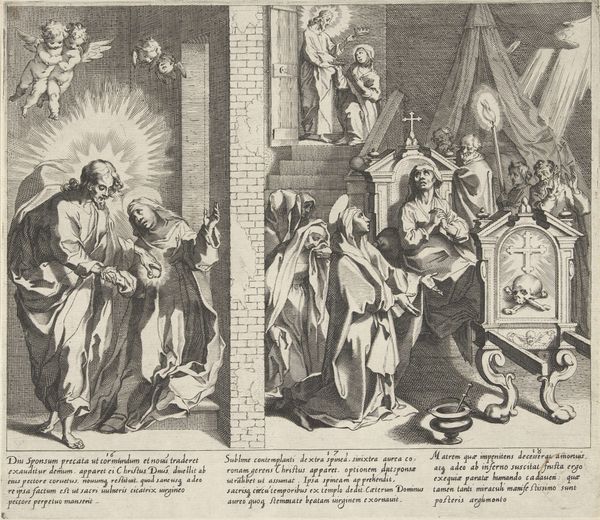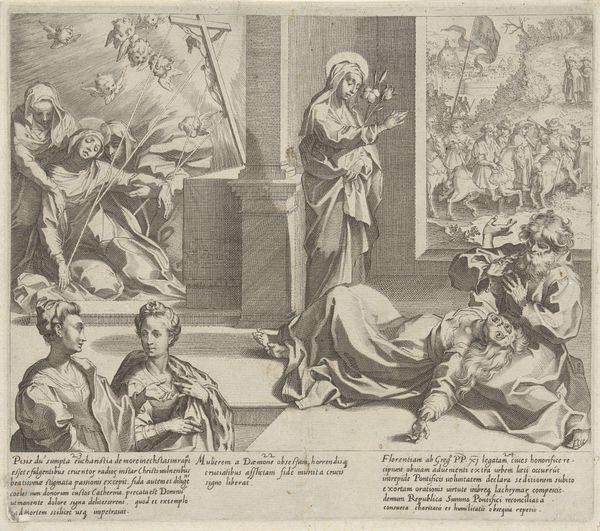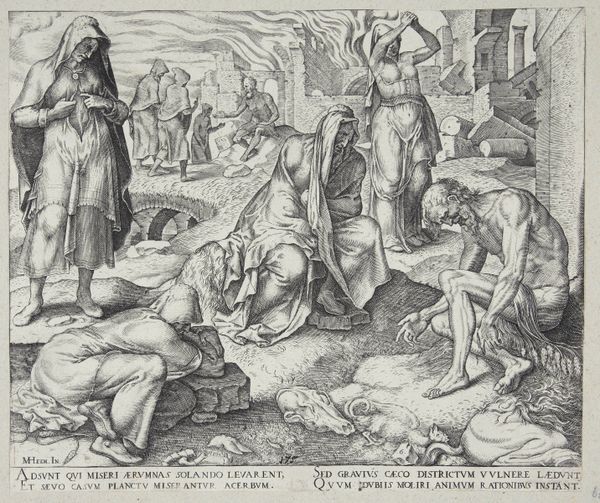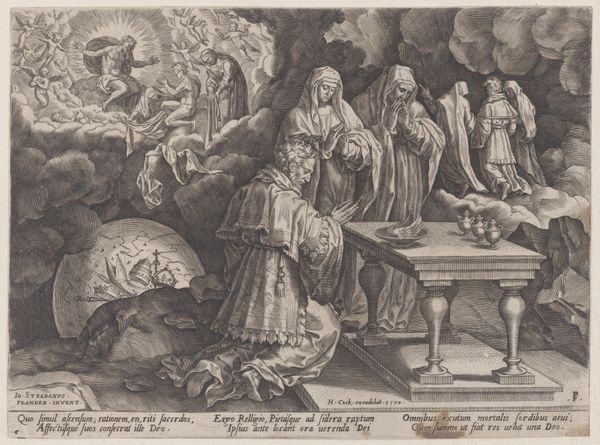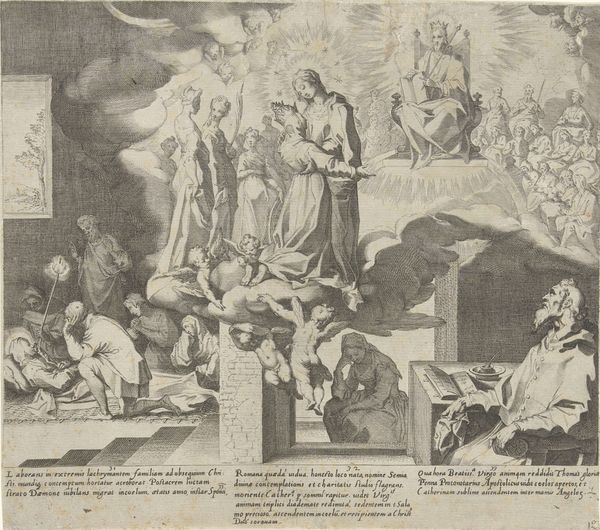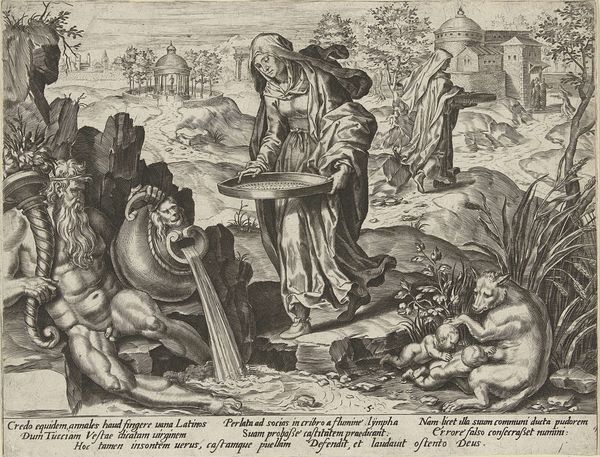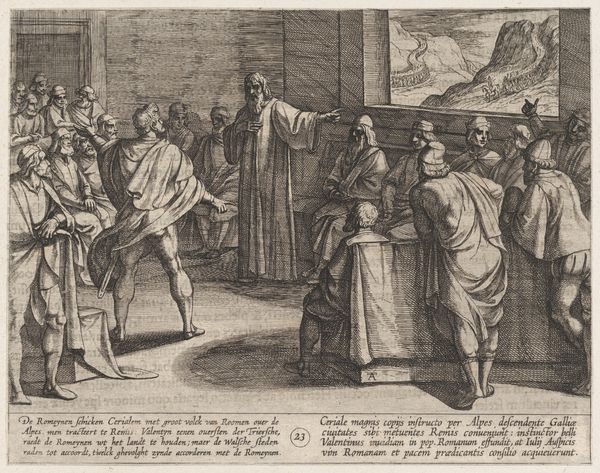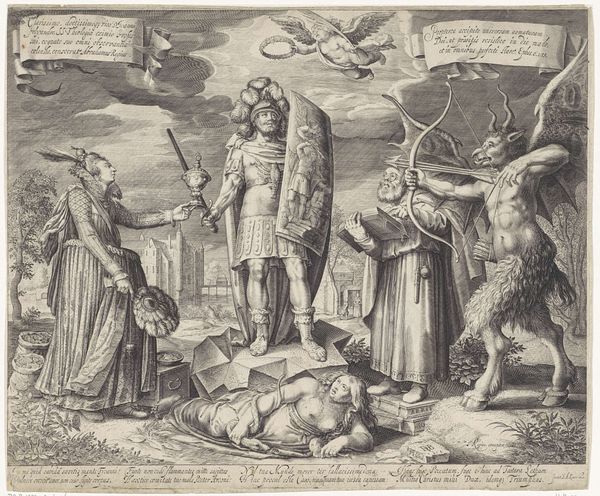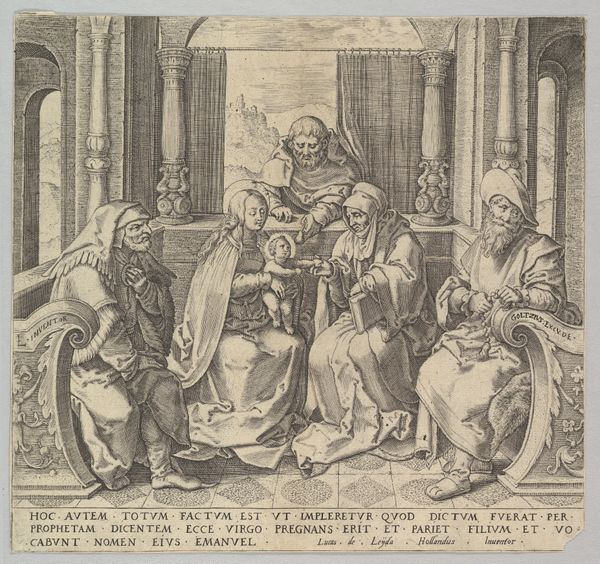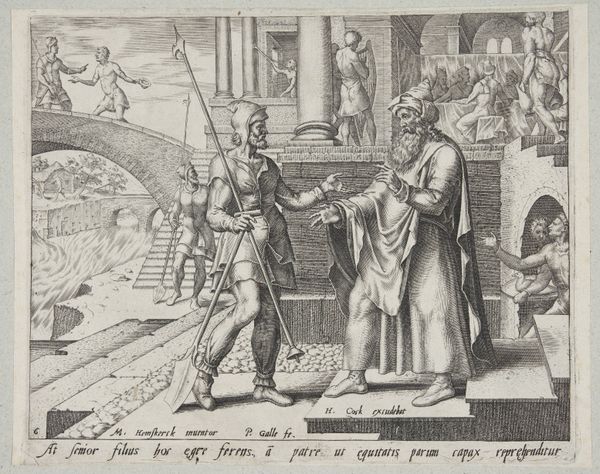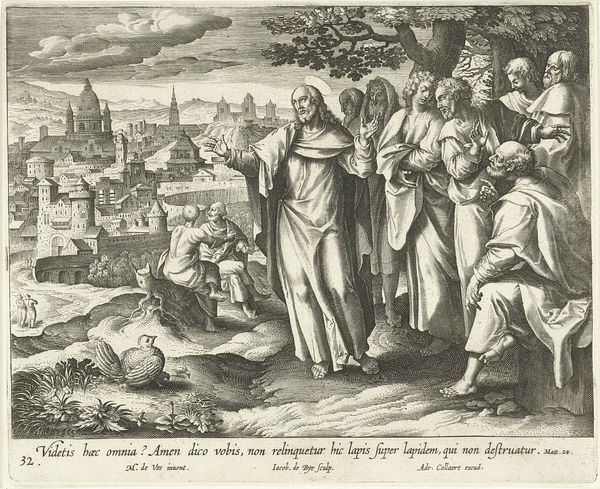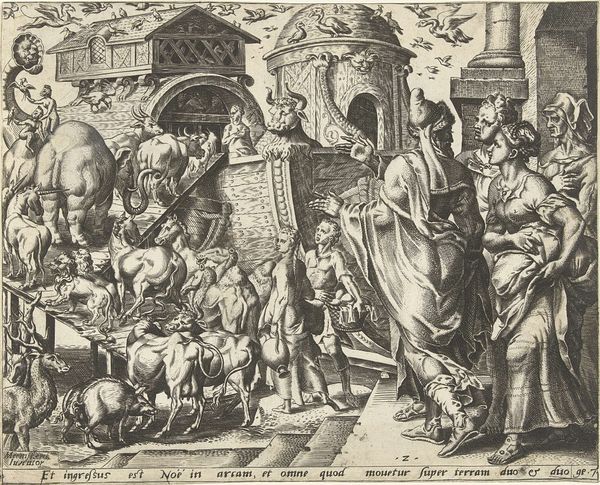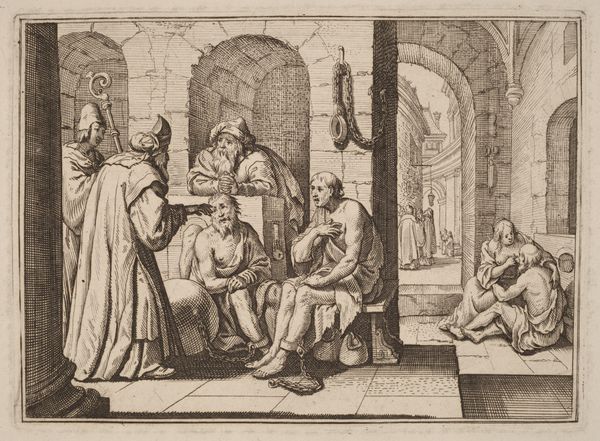
Catharina biddend / Visioen van Catharina / Catharina wordt dominicanes 1597
0:00
0:00
pieterdejodei
Rijksmuseum
print, engraving
#
portrait
#
narrative-art
#
baroque
# print
#
old engraving style
#
figuration
#
line
#
history-painting
#
engraving
Dimensions: height 246 mm, width 291 mm
Copyright: Rijks Museum: Open Domain
Curator: This engraving, “Catharina biddend / Visioen van Catharina / Catharina wordt dominicanes” by Pieter de Jode I, dates back to 1597. The contrast between the torturous scene on the left and the devotional scene on the right is striking. Editor: It's amazing how much detail he gets with just line work! What stands out to you about this piece? Curator: I’m drawn to the process itself. Consider the labour involved in producing such a detailed print in the late 16th century. How does the material, in this case the engraved plate and the resulting prints, function within the broader social context of religious devotion and dissemination of ideas? The choice of engraving allowed for mass production and distribution, effectively turning the artwork into a commodity. Editor: So it’s not just about the religious narrative, but about how the print itself was produced and consumed? Curator: Exactly! We should question the traditional art historical boundary separating “high art” from more accessible forms of visual communication like prints. This work facilitated widespread access to religious iconography. How would this have impacted understandings of Saint Catherine's story among different social classes? What do you notice about the language present? Editor: There are different paragraphs, which explain both of the scenarios. I see a parallel, one of a demonic side and one of a holy nature. Curator: And notice where they chose to use that text in the piece itself. The arrangement of these text blocks around the images speaks to the didactic role such prints played in disseminating religious ideas and solidifying certain doctrines within a broader social and cultural landscape. I would consider its commercial aspect and relationship to workshop practice too. Editor: That’s given me a whole new appreciation for prints as more than just copies. Curator: Indeed. Analyzing its materiality allows us to see it not only as art, but as a product deeply intertwined with the labour, belief systems, and economic realities of its time. Editor: Thanks for offering a fresh new lens to view such historical prints! I realize that art analysis does not happen in isolation from our reality, that production is deeply connected to labor.
Comments
No comments
Be the first to comment and join the conversation on the ultimate creative platform.
